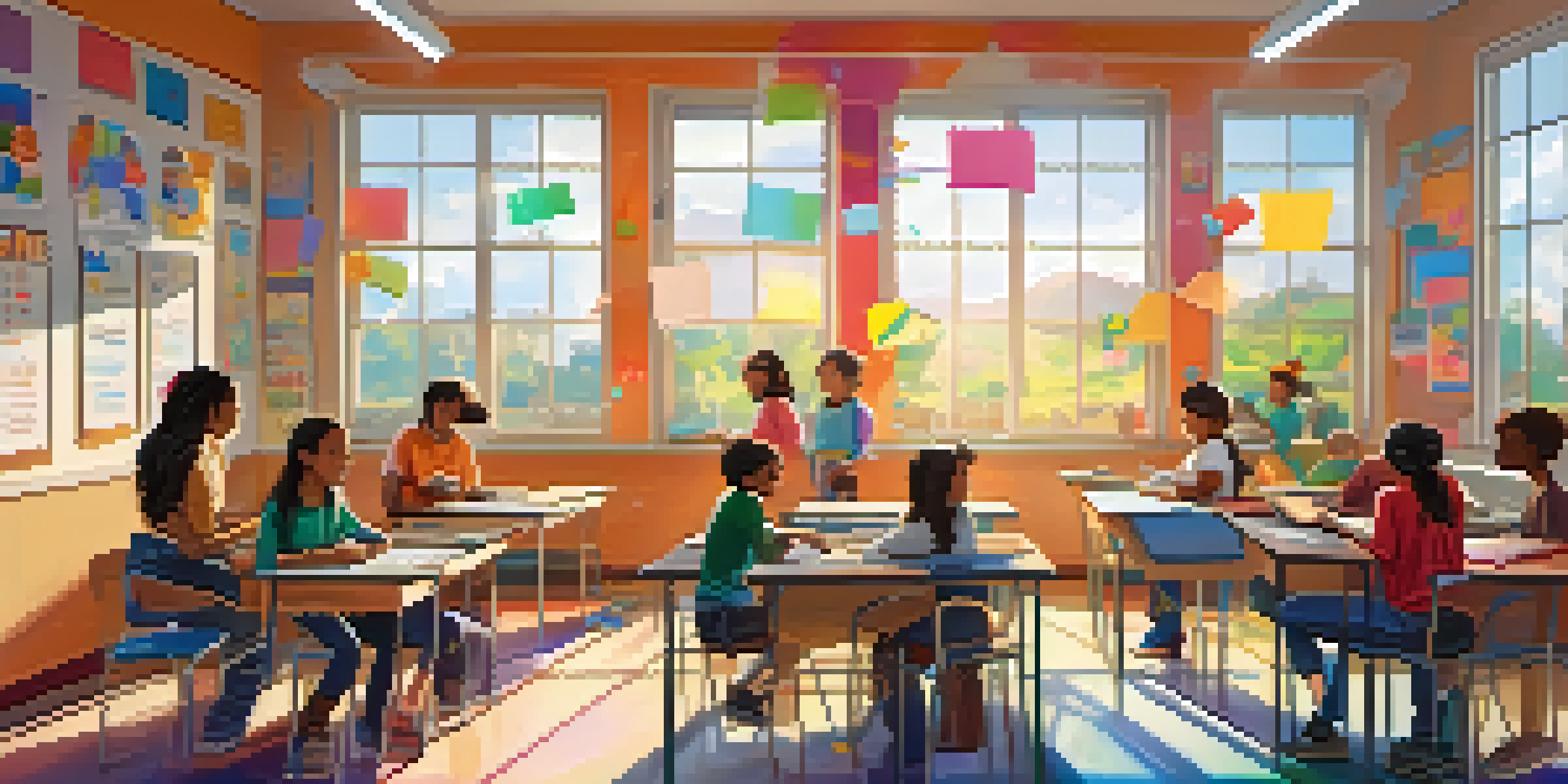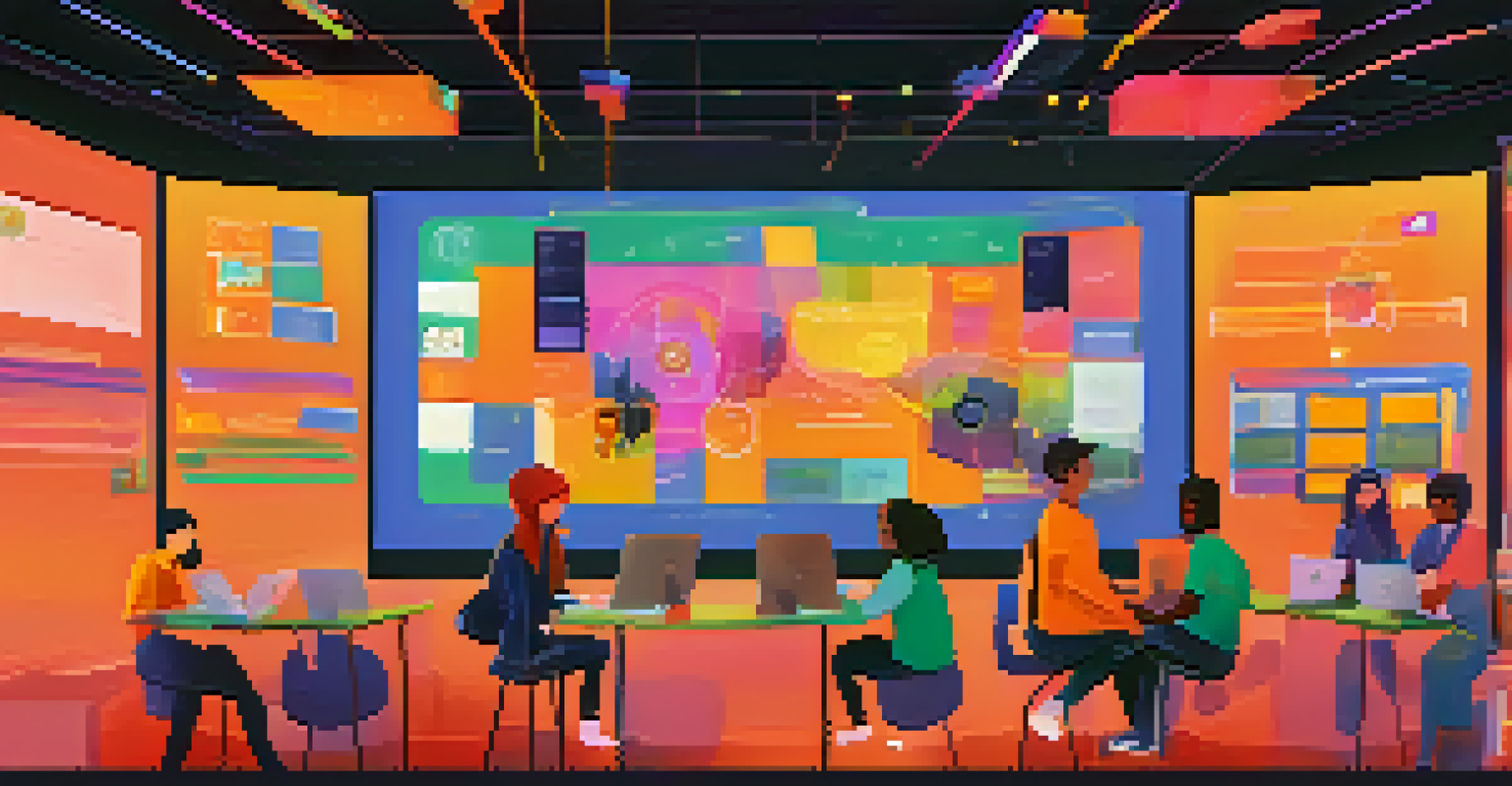The Use of Narrative Techniques in Gamified Learning Experiences

Understanding Gamified Learning and Its Benefits
Gamified learning integrates game elements into educational environments, making the experience more engaging. By incorporating point systems, badges, and leaderboards, learners feel motivated to participate actively. This approach transforms traditional learning into an interactive journey, enhancing knowledge retention and enjoyment.
Games are the most elevated form of investigation.
One of the key benefits of gamified learning is its ability to foster a sense of competition and achievement among learners. When students see their progress reflected in rewards, it encourages them to push their limits and strive for better performance. This motivation can lead to improved outcomes and a more profound understanding of the material.
Moreover, gamified learning caters to diverse learning styles, making education more accessible. Visual learners can benefit from graphics and animations, while kinesthetic learners engage through interactive tasks. This inclusivity ensures that every student can find a path that resonates with them, ultimately enriching the overall learning experience.
The Role of Narrative in Education
Narrative, or storytelling, has been a fundamental aspect of human communication for centuries. In education, narratives provide context and meaning, helping learners connect with the material on a personal level. When students relate to a story, they are more likely to remember the lessons it conveys.

Incorporating narrative into learning experiences can evoke emotions that enhance cognitive engagement. For example, when a historical event is presented through the eyes of a character, students can empathize with their struggles and triumphs. This emotional connection can lead to deeper understanding and retention of the subject matter.
Gamified Learning Enhances Engagement
Integrating game elements into education motivates learners through competition and rewards.
Furthermore, stories can serve as frameworks that guide learners through complex concepts. By presenting information within a narrative structure, educators can help students see the bigger picture and how various elements interconnect. This holistic approach transforms abstract ideas into relatable experiences.
Combining Narrative and Gamification
When narrative techniques are combined with gamification, the results can be transformative. The story becomes the backbone of the game, giving players a purpose and a goal to achieve. This synergy creates a powerful learning experience that can captivate and engage students like never before.
Storytelling is the most powerful way to put ideas into the world today.
For instance, imagine a science course where students embark on a quest to save a fictional planet. As they progress through challenges, they encounter characters that represent different scientific principles. This narrative not only makes the learning process fun but also contextualizes the knowledge in a way that is memorable.
Additionally, narrative-driven gamification encourages collaboration and social interaction. Players often work together to overcome challenges, sharing their insights and strategies. This collaborative spirit fosters a sense of community, making learning a shared adventure rather than a solitary task.
Key Narrative Techniques in Gamified Learning
Several narrative techniques can enhance gamified learning experiences. One effective method is character development, where learners create or interact with characters that embody specific traits or skills. This personalization can deepen engagement, as students invest in the characters' journeys.
Another technique is the use of branching storylines, which allow learners to make choices that affect the narrative's outcome. This interactivity empowers students, giving them a sense of control over their learning path. It also encourages critical thinking as they weigh their options and consider potential consequences.
Narratives Foster Deeper Connections
Storytelling in education helps students relate to material, enhancing retention and understanding.
Lastly, incorporating conflict and resolution within the narrative can heighten tension and intrigue. By presenting learners with challenges to overcome, educators can stimulate problem-solving skills and resilience. This dynamic keeps students invested in the story, driving them to seek solutions and advance.
Creating Immersive Learning Environments
To create an immersive learning environment, educators should focus on crafting a compelling narrative that resonates with learners. This involves understanding the audience's interests and incorporating relatable themes that reflect their experiences. A well-crafted narrative can draw students in, making them eager to engage with the content.
Additionally, using multimedia elements such as audio, visuals, and interactive components can enhance immersion. For example, incorporating sound effects or animations can bring the story to life, making it more vivid and engaging. This multisensory approach caters to various learning styles and keeps students captivated.
Finally, providing opportunities for reflection and discussion can deepen the immersive experience. Encouraging learners to share their thoughts on the narrative and its implications fosters critical thinking and connection to the material. This dialogue not only enriches understanding but also strengthens the community within the learning environment.
Measuring the Impact of Narrative Techniques
To gauge the effectiveness of narrative techniques in gamified learning, educators must establish clear metrics for success. This can include assessing student engagement levels, knowledge retention, and overall satisfaction with the learning experience. By analyzing these factors, educators can understand how narratives influence learning outcomes.
Surveys and feedback sessions can also provide valuable insights into students' perceptions of the narrative elements. Gathering this information allows educators to make informed adjustments to the curriculum, ensuring that the narrative remains relevant and engaging. Continuous improvement is key to maintaining an effective learning environment.
Combining Techniques Boosts Learning
Merging narrative and gamification creates immersive experiences that engage students and promote collaboration.
Moreover, analyzing performance data can help identify trends and correlations between narrative engagement and academic success. For instance, if students who engage more deeply with the narrative achieve higher scores, it highlights the importance of storytelling in education. This evidence can support the integration of narrative techniques in future learning initiatives.
Future Trends in Gamified Learning Narratives
As technology evolves, so too will the ways in which narratives are integrated into gamified learning experiences. Virtual and augmented reality are paving the way for even more immersive storytelling opportunities. Imagine students walking through historical events or exploring scientific phenomena in a fully interactive environment.
Artificial intelligence (AI) could further personalize narratives, adapting storylines based on individual learner preferences and progress. This level of customization could enhance engagement and ensure that each student feels uniquely connected to the material. The potential for tailored experiences is immense.

Lastly, the rise of collaborative online platforms may allow learners to co-create narratives, fostering creativity and teamwork. By contributing to a shared story, students can engage in deeper discussions and develop critical thinking skills. This shift toward collaborative narrative-building can redefine the landscape of gamified learning.